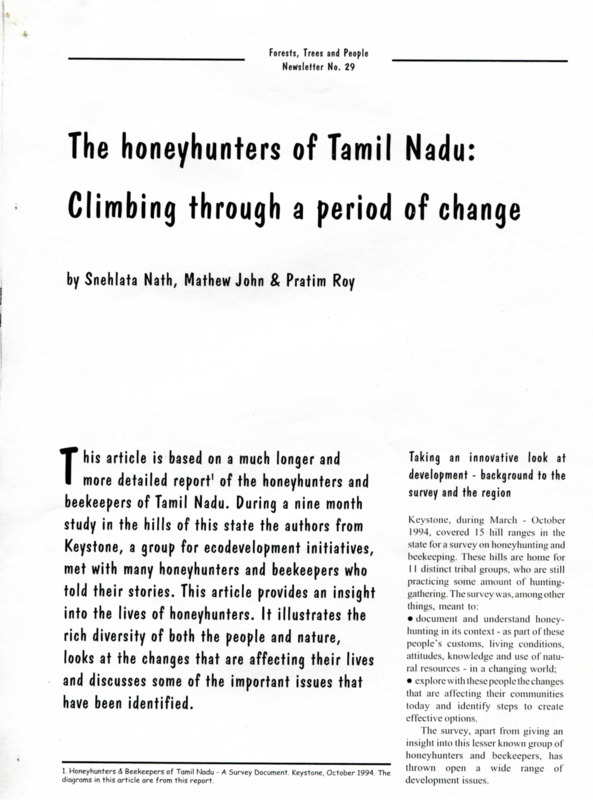-
 PGS holds promise for small-holders and NTFP collectors_2008 09 no 15 Voices from the Forest
PGS holds promise for small-holders and NTFP collectors_2008 09 no 15 Voices from the Forest PGS is a way bringing in a large number of farmers and NTFP collectors into the organic fold who have not been able to access the third party systems of being certified organic.
-
 Honey hunting in India as a way of life_2008 09 American Bee Journal
Honey hunting in India as a way of life_2008 09 American Bee Journal In this journal, the different jobs on the hunt of the Kurumbas are taken very seriously from making utensils used for hunting to collecting the honey combs.
-
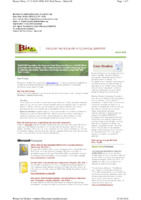 Case Study on Keystone_2008 03 BigTech
Case Study on Keystone_2008 03 BigTech This study is about the Keystone foundations work in NBR with indigenous communities on eco-development initiatives. Developed and upgraded through IT solutions by NASSCOM.
-
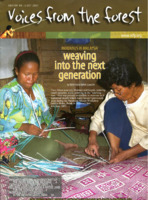 New film on NTFP's in India for release in October_2007 10 no 13 Voices from the Forest
New film on NTFP's in India for release in October_2007 10 no 13 Voices from the Forest NTFP EP's latest film offering promises to be another thought provoking piece and aims to contribute to the advocacy for sustainable forest-based livelihoods for communities in the region.
-
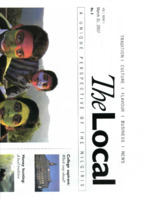 Honey hunting_2007-03-31 The Local
Honey hunting_2007-03-31 The Local It describes the Honey hunting a unique tradition among indigenous people of nilgiris. How the kurumba's collecting honey from the cliff, the methods, equipment and their prayers while honey hunting.
-
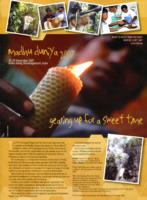 Madhu Duniya insert_2007 13 Voices from the Forest
Madhu Duniya insert_2007 13 Voices from the Forest The NTFP EP for south and southeast asia is organising the Madhu Duniya conference. Communities to share knowledge , exchange technologies and information. Origin of honeymoon. The honey related books and films from various places.
-
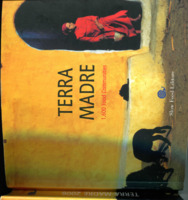 Terra Madre_2006
Terra Madre_2006 The kashmir saffron producers and The Kotagiri Honey producers, Their cultivation methods and how they are using the saffron and honey for their rituals and livelihood.
-
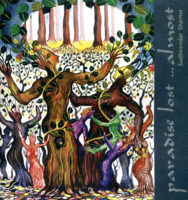 Paradise Lost..Almost - Ever Busy_2006 May
Paradise Lost..Almost - Ever Busy_2006 May Honey bees are a busy species in the western ghats, it helps in conserve the biodiversity of the region. The existence is threatened by diversity factors. To conserve the indigenous hoeny bees in the western ghats they have launched save honey bees campaign iin '92.
-
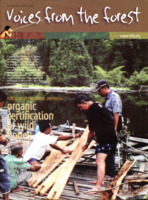 A Trip to Keystone_ Voices from the Forest_2006 05 no 10
A Trip to Keystone_ Voices from the Forest_2006 05 no 10 The document discusses various aspects of non-timber forest products (NTFPs) and sustainable practices in Indonesia and India, highlighting community efforts in harvesting and marketing these resources. It features a traditional method used by community members in Danau Sentarum to attract wild honeybees for honey production, emphasizing the importance of sustainable techniques for organic certification. The document also shares insights from a workshop on gums and resins, detailing the challenges faced by local communities, such as control by external concessionaires and government regulations. Additionally, it describes the Keystone Foundation's initiatives in the Nilgiris, where they support tribal communities in sustainable harvesting practices and market their products, thereby promoting ecological conservation and economic development. Overall, the document underscores the significance of community-oriented policies and practices for the effective management of forest resources.
-
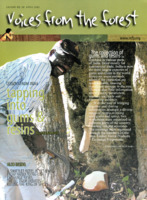 Tapping into gums and resins_2005 April- Voices from the Forest
Tapping into gums and resins_2005 April- Voices from the Forest India is now the third largest exporter of gums and resins in the wolrd. Some methods adopted for extraction are unsustainable, causing significant damage to the tree. Information about quality parameters, markets and trade and also harvesting methods.sharing information amongst a diverse range of people working with gums and resins.
-
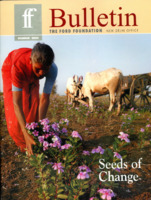 Enterprise led Biodiversity Conservation_2004 Summer The Ford Foundation Bulletin
Enterprise led Biodiversity Conservation_2004 Summer The Ford Foundation Bulletin Conducting research on NTFP's and tribal communities collection practices. It helps to conserve forests and NTFP, thereby improving the livelihoods and living conditions of tribal people.
-
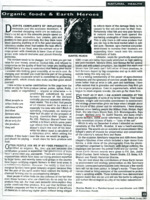 Organic Foods & Earth Hero's_2003 January Education World
Organic Foods & Earth Hero's_2003 January Education World
-
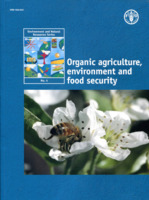 Land Development & Revival of Traditional Agriculture with Indigenous Communities_2002 Env &Natural Res Series FAO - Case Study 3
Land Development & Revival of Traditional Agriculture with Indigenous Communities_2002 Env &Natural Res Series FAO - Case Study 3 The land development and revival of traditional agriculture with the Tribal communities in the Nilgiris. Increase of tea plantations in the communities, introducing the traditional crops and coffee to increase the biodiversity, The importance of the organic agriculture, youngsters learn to adopt useful traditional knowledge and upgrade them with organic agriculture practices.
-
 Proceedings of income generating programmes of EZE partner organizations in Andhra Pradesh and Tamil Nadu Case Study on Honey Hunting (redone)_1997 11 Report
Proceedings of income generating programmes of EZE partner organizations in Andhra Pradesh and Tamil Nadu Case Study on Honey Hunting (redone)_1997 11 Report Honey hunting in many tribal areas is a traditional activity. The process of honey hunting, materials used for hunting, earlier honey was sold @ ₹15 to 25 per kg, after NGO's intervention they are able to earn upto ₹70 per kg.
-
 Destroying beekeepers - Thai Sacbrood Virus_B&D -1995
Destroying beekeepers - Thai Sacbrood Virus_B&D -1995 In this journal How the Thai Sacbrood Virus attacked the Honeycomb, affetcted places in southern states, symptoms of TSBV in Apis dorsata, and similar symptoms in apis cerana also, The virus attacks at the larval and early pupal stage, The local beekeepers have tried treating with the herbal plants, and the experimentals by the Central Bee Reserch and Training Institute. The current situation of the Beekeepers after the TSBV.
-
 The Poor and the Private Sector _ Sitaram Rao Livelihoods India Case Study Competition_2009
The Poor and the Private Sector _ Sitaram Rao Livelihoods India Case Study Competition_2009 A meeting point of conservation, Enterprise, Livelihood, Educating to preserve the Old by Creating the New, GOONJ transforms villages through its Cloth for Work, Enhancing income of farmers Through PAC, GCS bank is a sustainable approach to achieve seed security using market, Extending Micro-Insurance to rural India throough TATA AIG, Waste maagement, environment, conservation and employment, The SFCD founded by Dr. Madhumitha Puri, Public-Private-Partnership.
-
 PROTECTED AREA UPDATE 84-full
PROTECTED AREA UPDATE 84-full The Nilgiri Natural History Society was officially launched on 18th of february 2010. the society aims to promote ecological, design and implement projects, undertaking research activities, network and exchange info, The Save Western Ghats Meet 2010 was held from feb 18 to 20 at keystone foundation. dicussed about to protect the NBR, large dams , thermal power plants, issues of indigenous people, human-wildlife conflict, GM and organic farming and mining.
-
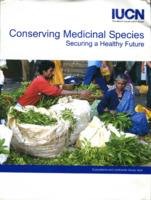 Conserving medicinal Species_IUCN_2006
Conserving medicinal Species_IUCN_2006 Cultural bonding between the communities of hunter-gatheres. Usages of chemical fertilizers and pesticides which affect the water retention capacity of the soil, threats by the commercial plantations like eucalyptus and wattle.consume of the honey by the irula and kurumba community.
-
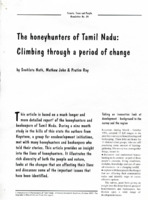 The Honey hunters of Tamil Nadu-Climbing Through a Period of Change_1995- Forest Trees & People Newsletter no 29.
The Honey hunters of Tamil Nadu-Climbing Through a Period of Change_1995- Forest Trees & People Newsletter no 29. The newsletter which gives you the details of the honey hunting tech, rituals what they following, uses of the honey and the comb,
-
 Skill-Cum_Technology_ Upgradation _Programme060_Report
Skill-Cum_Technology_ Upgradation _Programme060_Report In this programme paper, The plan to take place at the Honey hunters programme, The issues discussed in the meeting, The honey hunters group were shown the solar wax extractor and other simple equipment for honey and wax extraction, participants details. Field trip details like members who took participate, route taken, The places visited, Notes from along the way. Suresh Chengappa Farm, Baghamandala/talai cauvery, Progressive beekeeper's co-operative society, Beekeeping training institute, and also visited to the all india Honey Festival Apiexi '98, Beekeeping training programme on 22nd August, 98.
-
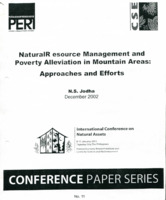 Natural resources management and poverty alleviation in Mountain areas
Natural resources management and poverty alleviation in Mountain areas In This conference paper series gives you the details of natural resource management and poverty alleviation in the mountain areas, and tha past and present approaches to NRM, Comparison between traditional sysytem and the present day systems NRM, lessons for rebuilding the natural assets,
-
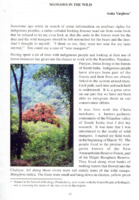 Mangoes in the wild
Mangoes in the wild It was first with the Cholanaikans , a hunter-gatherer community of the Nilambur valley of south India. They lived along river banks of rushing waters that flowed into the Chaliyar, wild mangoes used as a substitute for tamarind from the pulp of the wild mango. Collections from the wild of many plants still happens and the indigenous people are the collectors. it is a dominant species of the riparian ecosystem, just remember they are more a treat for the eyes than a feast for the tongue.
-
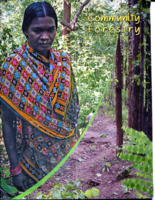 Ecological Monitoring for Sustainable Forest Management_Community Forestry
Ecological Monitoring for Sustainable Forest Management_Community Forestry In this article the complete records of honey and amla collection and the other details are mentioned. The forest resource map for each village defines the forest boundary, The types of product and the resource assessment strategy adopted by KF. With experience in ecology monitoring , we visited Orissa on an invitation from RCDC, which is working towards building an inventory of forest produce in Koraput and Rayagada Districts.we were concerned that there was a feeling hat the forest was an inexhaustible resource.
-
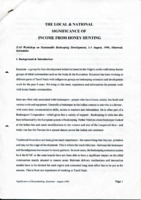 The Local and International Significance of Income From Honey Hunting_1998
The Local and International Significance of Income From Honey Hunting_1998 In this article, it gives you the keystone's eco-development in itiatives in nilgiris, and wworking experience with honey hunters group of thetribal communities. The honey hunters are Disorganised and informal, located in remote locations, silent, shy people who help each other in the honey trade through word of mouth. their income through the honey hhunting, the importance of Apis dorsata in the Indian honey industry. At keystone, marketting and enterprise development aims to become a major part of our work.
-
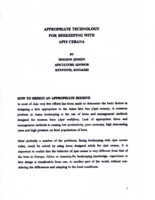 Appropriate Technology for Beekeeping with Apis Cerana
Appropriate Technology for Beekeeping with Apis Cerana The document discusses the need for specially designed beehives for the Asian honeybee, Apis cerana, as traditional hives used for Western bees lead to low productivity and high absconding rates. It emphasizes the importance of considering various factors such as hive volume, comb area, and spacing to create a suitable environment for these bees. The document highlights the advantages of using top bar hives over frame hives, demonstrating that they can significantly increase comb area and improve honey production. Additionally, it explores the use of local materials like bamboo for hive construction and introduces the concept of feeding bees with inverted sugar to enhance colony growth and reduce absconding. Overall, the document advocates for tailored beekeeping practices that align with the unique behaviors and needs of Apis cerana to improve beekeeping outcomes in Asia.
From this article they gave details about how to design an appropriate beehive, appropriate bees, A key to larger colonies, how to get more combs in the same volume, types of hives, new innovations for hives, selecting material for the hives.
 PGS holds promise for small-holders and NTFP collectors_2008 09 no 15 Voices from the Forest PGS is a way bringing in a large number of farmers and NTFP collectors into the organic fold who have not been able to access the third party systems of being certified organic.
PGS holds promise for small-holders and NTFP collectors_2008 09 no 15 Voices from the Forest PGS is a way bringing in a large number of farmers and NTFP collectors into the organic fold who have not been able to access the third party systems of being certified organic. Honey hunting in India as a way of life_2008 09 American Bee Journal In this journal, the different jobs on the hunt of the Kurumbas are taken very seriously from making utensils used for hunting to collecting the honey combs.
Honey hunting in India as a way of life_2008 09 American Bee Journal In this journal, the different jobs on the hunt of the Kurumbas are taken very seriously from making utensils used for hunting to collecting the honey combs. Case Study on Keystone_2008 03 BigTech This study is about the Keystone foundations work in NBR with indigenous communities on eco-development initiatives. Developed and upgraded through IT solutions by NASSCOM.
Case Study on Keystone_2008 03 BigTech This study is about the Keystone foundations work in NBR with indigenous communities on eco-development initiatives. Developed and upgraded through IT solutions by NASSCOM. New film on NTFP's in India for release in October_2007 10 no 13 Voices from the Forest NTFP EP's latest film offering promises to be another thought provoking piece and aims to contribute to the advocacy for sustainable forest-based livelihoods for communities in the region.
New film on NTFP's in India for release in October_2007 10 no 13 Voices from the Forest NTFP EP's latest film offering promises to be another thought provoking piece and aims to contribute to the advocacy for sustainable forest-based livelihoods for communities in the region. Honey hunting_2007-03-31 The Local It describes the Honey hunting a unique tradition among indigenous people of nilgiris. How the kurumba's collecting honey from the cliff, the methods, equipment and their prayers while honey hunting.
Honey hunting_2007-03-31 The Local It describes the Honey hunting a unique tradition among indigenous people of nilgiris. How the kurumba's collecting honey from the cliff, the methods, equipment and their prayers while honey hunting. Madhu Duniya insert_2007 13 Voices from the Forest The NTFP EP for south and southeast asia is organising the Madhu Duniya conference. Communities to share knowledge , exchange technologies and information. Origin of honeymoon. The honey related books and films from various places.
Madhu Duniya insert_2007 13 Voices from the Forest The NTFP EP for south and southeast asia is organising the Madhu Duniya conference. Communities to share knowledge , exchange technologies and information. Origin of honeymoon. The honey related books and films from various places. Terra Madre_2006 The kashmir saffron producers and The Kotagiri Honey producers, Their cultivation methods and how they are using the saffron and honey for their rituals and livelihood.
Terra Madre_2006 The kashmir saffron producers and The Kotagiri Honey producers, Their cultivation methods and how they are using the saffron and honey for their rituals and livelihood. Paradise Lost..Almost - Ever Busy_2006 May Honey bees are a busy species in the western ghats, it helps in conserve the biodiversity of the region. The existence is threatened by diversity factors. To conserve the indigenous hoeny bees in the western ghats they have launched save honey bees campaign iin '92.
Paradise Lost..Almost - Ever Busy_2006 May Honey bees are a busy species in the western ghats, it helps in conserve the biodiversity of the region. The existence is threatened by diversity factors. To conserve the indigenous hoeny bees in the western ghats they have launched save honey bees campaign iin '92. A Trip to Keystone_ Voices from the Forest_2006 05 no 10 The document discusses various aspects of non-timber forest products (NTFPs) and sustainable practices in Indonesia and India, highlighting community efforts in harvesting and marketing these resources. It features a traditional method used by community members in Danau Sentarum to attract wild honeybees for honey production, emphasizing the importance of sustainable techniques for organic certification. The document also shares insights from a workshop on gums and resins, detailing the challenges faced by local communities, such as control by external concessionaires and government regulations. Additionally, it describes the Keystone Foundation's initiatives in the Nilgiris, where they support tribal communities in sustainable harvesting practices and market their products, thereby promoting ecological conservation and economic development. Overall, the document underscores the significance of community-oriented policies and practices for the effective management of forest resources.
A Trip to Keystone_ Voices from the Forest_2006 05 no 10 The document discusses various aspects of non-timber forest products (NTFPs) and sustainable practices in Indonesia and India, highlighting community efforts in harvesting and marketing these resources. It features a traditional method used by community members in Danau Sentarum to attract wild honeybees for honey production, emphasizing the importance of sustainable techniques for organic certification. The document also shares insights from a workshop on gums and resins, detailing the challenges faced by local communities, such as control by external concessionaires and government regulations. Additionally, it describes the Keystone Foundation's initiatives in the Nilgiris, where they support tribal communities in sustainable harvesting practices and market their products, thereby promoting ecological conservation and economic development. Overall, the document underscores the significance of community-oriented policies and practices for the effective management of forest resources. Tapping into gums and resins_2005 April- Voices from the Forest India is now the third largest exporter of gums and resins in the wolrd. Some methods adopted for extraction are unsustainable, causing significant damage to the tree. Information about quality parameters, markets and trade and also harvesting methods.sharing information amongst a diverse range of people working with gums and resins.
Tapping into gums and resins_2005 April- Voices from the Forest India is now the third largest exporter of gums and resins in the wolrd. Some methods adopted for extraction are unsustainable, causing significant damage to the tree. Information about quality parameters, markets and trade and also harvesting methods.sharing information amongst a diverse range of people working with gums and resins. Enterprise led Biodiversity Conservation_2004 Summer The Ford Foundation Bulletin Conducting research on NTFP's and tribal communities collection practices. It helps to conserve forests and NTFP, thereby improving the livelihoods and living conditions of tribal people.
Enterprise led Biodiversity Conservation_2004 Summer The Ford Foundation Bulletin Conducting research on NTFP's and tribal communities collection practices. It helps to conserve forests and NTFP, thereby improving the livelihoods and living conditions of tribal people. Organic Foods & Earth Hero's_2003 January Education World
Organic Foods & Earth Hero's_2003 January Education World
 Land Development & Revival of Traditional Agriculture with Indigenous Communities_2002 Env &Natural Res Series FAO - Case Study 3 The land development and revival of traditional agriculture with the Tribal communities in the Nilgiris. Increase of tea plantations in the communities, introducing the traditional crops and coffee to increase the biodiversity, The importance of the organic agriculture, youngsters learn to adopt useful traditional knowledge and upgrade them with organic agriculture practices.
Land Development & Revival of Traditional Agriculture with Indigenous Communities_2002 Env &Natural Res Series FAO - Case Study 3 The land development and revival of traditional agriculture with the Tribal communities in the Nilgiris. Increase of tea plantations in the communities, introducing the traditional crops and coffee to increase the biodiversity, The importance of the organic agriculture, youngsters learn to adopt useful traditional knowledge and upgrade them with organic agriculture practices. Proceedings of income generating programmes of EZE partner organizations in Andhra Pradesh and Tamil Nadu Case Study on Honey Hunting (redone)_1997 11 Report Honey hunting in many tribal areas is a traditional activity. The process of honey hunting, materials used for hunting, earlier honey was sold @ ₹15 to 25 per kg, after NGO's intervention they are able to earn upto ₹70 per kg.
Proceedings of income generating programmes of EZE partner organizations in Andhra Pradesh and Tamil Nadu Case Study on Honey Hunting (redone)_1997 11 Report Honey hunting in many tribal areas is a traditional activity. The process of honey hunting, materials used for hunting, earlier honey was sold @ ₹15 to 25 per kg, after NGO's intervention they are able to earn upto ₹70 per kg. Destroying beekeepers - Thai Sacbrood Virus_B&D -1995 In this journal How the Thai Sacbrood Virus attacked the Honeycomb, affetcted places in southern states, symptoms of TSBV in Apis dorsata, and similar symptoms in apis cerana also, The virus attacks at the larval and early pupal stage, The local beekeepers have tried treating with the herbal plants, and the experimentals by the Central Bee Reserch and Training Institute. The current situation of the Beekeepers after the TSBV.
Destroying beekeepers - Thai Sacbrood Virus_B&D -1995 In this journal How the Thai Sacbrood Virus attacked the Honeycomb, affetcted places in southern states, symptoms of TSBV in Apis dorsata, and similar symptoms in apis cerana also, The virus attacks at the larval and early pupal stage, The local beekeepers have tried treating with the herbal plants, and the experimentals by the Central Bee Reserch and Training Institute. The current situation of the Beekeepers after the TSBV. The Poor and the Private Sector _ Sitaram Rao Livelihoods India Case Study Competition_2009 A meeting point of conservation, Enterprise, Livelihood, Educating to preserve the Old by Creating the New, GOONJ transforms villages through its Cloth for Work, Enhancing income of farmers Through PAC, GCS bank is a sustainable approach to achieve seed security using market, Extending Micro-Insurance to rural India throough TATA AIG, Waste maagement, environment, conservation and employment, The SFCD founded by Dr. Madhumitha Puri, Public-Private-Partnership.
The Poor and the Private Sector _ Sitaram Rao Livelihoods India Case Study Competition_2009 A meeting point of conservation, Enterprise, Livelihood, Educating to preserve the Old by Creating the New, GOONJ transforms villages through its Cloth for Work, Enhancing income of farmers Through PAC, GCS bank is a sustainable approach to achieve seed security using market, Extending Micro-Insurance to rural India throough TATA AIG, Waste maagement, environment, conservation and employment, The SFCD founded by Dr. Madhumitha Puri, Public-Private-Partnership. PROTECTED AREA UPDATE 84-full The Nilgiri Natural History Society was officially launched on 18th of february 2010. the society aims to promote ecological, design and implement projects, undertaking research activities, network and exchange info, The Save Western Ghats Meet 2010 was held from feb 18 to 20 at keystone foundation. dicussed about to protect the NBR, large dams , thermal power plants, issues of indigenous people, human-wildlife conflict, GM and organic farming and mining.
PROTECTED AREA UPDATE 84-full The Nilgiri Natural History Society was officially launched on 18th of february 2010. the society aims to promote ecological, design and implement projects, undertaking research activities, network and exchange info, The Save Western Ghats Meet 2010 was held from feb 18 to 20 at keystone foundation. dicussed about to protect the NBR, large dams , thermal power plants, issues of indigenous people, human-wildlife conflict, GM and organic farming and mining. Conserving medicinal Species_IUCN_2006 Cultural bonding between the communities of hunter-gatheres. Usages of chemical fertilizers and pesticides which affect the water retention capacity of the soil, threats by the commercial plantations like eucalyptus and wattle.consume of the honey by the irula and kurumba community.
Conserving medicinal Species_IUCN_2006 Cultural bonding between the communities of hunter-gatheres. Usages of chemical fertilizers and pesticides which affect the water retention capacity of the soil, threats by the commercial plantations like eucalyptus and wattle.consume of the honey by the irula and kurumba community. The Honey hunters of Tamil Nadu-Climbing Through a Period of Change_1995- Forest Trees & People Newsletter no 29. The newsletter which gives you the details of the honey hunting tech, rituals what they following, uses of the honey and the comb,
The Honey hunters of Tamil Nadu-Climbing Through a Period of Change_1995- Forest Trees & People Newsletter no 29. The newsletter which gives you the details of the honey hunting tech, rituals what they following, uses of the honey and the comb, Skill-Cum_Technology_ Upgradation _Programme060_Report In this programme paper, The plan to take place at the Honey hunters programme, The issues discussed in the meeting, The honey hunters group were shown the solar wax extractor and other simple equipment for honey and wax extraction, participants details. Field trip details like members who took participate, route taken, The places visited, Notes from along the way. Suresh Chengappa Farm, Baghamandala/talai cauvery, Progressive beekeeper's co-operative society, Beekeeping training institute, and also visited to the all india Honey Festival Apiexi '98, Beekeeping training programme on 22nd August, 98.
Skill-Cum_Technology_ Upgradation _Programme060_Report In this programme paper, The plan to take place at the Honey hunters programme, The issues discussed in the meeting, The honey hunters group were shown the solar wax extractor and other simple equipment for honey and wax extraction, participants details. Field trip details like members who took participate, route taken, The places visited, Notes from along the way. Suresh Chengappa Farm, Baghamandala/talai cauvery, Progressive beekeeper's co-operative society, Beekeeping training institute, and also visited to the all india Honey Festival Apiexi '98, Beekeeping training programme on 22nd August, 98. Natural resources management and poverty alleviation in Mountain areas In This conference paper series gives you the details of natural resource management and poverty alleviation in the mountain areas, and tha past and present approaches to NRM, Comparison between traditional sysytem and the present day systems NRM, lessons for rebuilding the natural assets,
Natural resources management and poverty alleviation in Mountain areas In This conference paper series gives you the details of natural resource management and poverty alleviation in the mountain areas, and tha past and present approaches to NRM, Comparison between traditional sysytem and the present day systems NRM, lessons for rebuilding the natural assets, Mangoes in the wild It was first with the Cholanaikans , a hunter-gatherer community of the Nilambur valley of south India. They lived along river banks of rushing waters that flowed into the Chaliyar, wild mangoes used as a substitute for tamarind from the pulp of the wild mango. Collections from the wild of many plants still happens and the indigenous people are the collectors. it is a dominant species of the riparian ecosystem, just remember they are more a treat for the eyes than a feast for the tongue.
Mangoes in the wild It was first with the Cholanaikans , a hunter-gatherer community of the Nilambur valley of south India. They lived along river banks of rushing waters that flowed into the Chaliyar, wild mangoes used as a substitute for tamarind from the pulp of the wild mango. Collections from the wild of many plants still happens and the indigenous people are the collectors. it is a dominant species of the riparian ecosystem, just remember they are more a treat for the eyes than a feast for the tongue. Ecological Monitoring for Sustainable Forest Management_Community Forestry In this article the complete records of honey and amla collection and the other details are mentioned. The forest resource map for each village defines the forest boundary, The types of product and the resource assessment strategy adopted by KF. With experience in ecology monitoring , we visited Orissa on an invitation from RCDC, which is working towards building an inventory of forest produce in Koraput and Rayagada Districts.we were concerned that there was a feeling hat the forest was an inexhaustible resource.
Ecological Monitoring for Sustainable Forest Management_Community Forestry In this article the complete records of honey and amla collection and the other details are mentioned. The forest resource map for each village defines the forest boundary, The types of product and the resource assessment strategy adopted by KF. With experience in ecology monitoring , we visited Orissa on an invitation from RCDC, which is working towards building an inventory of forest produce in Koraput and Rayagada Districts.we were concerned that there was a feeling hat the forest was an inexhaustible resource. The Local and International Significance of Income From Honey Hunting_1998 In this article, it gives you the keystone's eco-development in itiatives in nilgiris, and wworking experience with honey hunters group of thetribal communities. The honey hunters are Disorganised and informal, located in remote locations, silent, shy people who help each other in the honey trade through word of mouth. their income through the honey hhunting, the importance of Apis dorsata in the Indian honey industry. At keystone, marketting and enterprise development aims to become a major part of our work.
The Local and International Significance of Income From Honey Hunting_1998 In this article, it gives you the keystone's eco-development in itiatives in nilgiris, and wworking experience with honey hunters group of thetribal communities. The honey hunters are Disorganised and informal, located in remote locations, silent, shy people who help each other in the honey trade through word of mouth. their income through the honey hhunting, the importance of Apis dorsata in the Indian honey industry. At keystone, marketting and enterprise development aims to become a major part of our work. Appropriate Technology for Beekeeping with Apis Cerana The document discusses the need for specially designed beehives for the Asian honeybee, Apis cerana, as traditional hives used for Western bees lead to low productivity and high absconding rates. It emphasizes the importance of considering various factors such as hive volume, comb area, and spacing to create a suitable environment for these bees. The document highlights the advantages of using top bar hives over frame hives, demonstrating that they can significantly increase comb area and improve honey production. Additionally, it explores the use of local materials like bamboo for hive construction and introduces the concept of feeding bees with inverted sugar to enhance colony growth and reduce absconding. Overall, the document advocates for tailored beekeeping practices that align with the unique behaviors and needs of Apis cerana to improve beekeeping outcomes in Asia. From this article they gave details about how to design an appropriate beehive, appropriate bees, A key to larger colonies, how to get more combs in the same volume, types of hives, new innovations for hives, selecting material for the hives.
Appropriate Technology for Beekeeping with Apis Cerana The document discusses the need for specially designed beehives for the Asian honeybee, Apis cerana, as traditional hives used for Western bees lead to low productivity and high absconding rates. It emphasizes the importance of considering various factors such as hive volume, comb area, and spacing to create a suitable environment for these bees. The document highlights the advantages of using top bar hives over frame hives, demonstrating that they can significantly increase comb area and improve honey production. Additionally, it explores the use of local materials like bamboo for hive construction and introduces the concept of feeding bees with inverted sugar to enhance colony growth and reduce absconding. Overall, the document advocates for tailored beekeeping practices that align with the unique behaviors and needs of Apis cerana to improve beekeeping outcomes in Asia. From this article they gave details about how to design an appropriate beehive, appropriate bees, A key to larger colonies, how to get more combs in the same volume, types of hives, new innovations for hives, selecting material for the hives.
